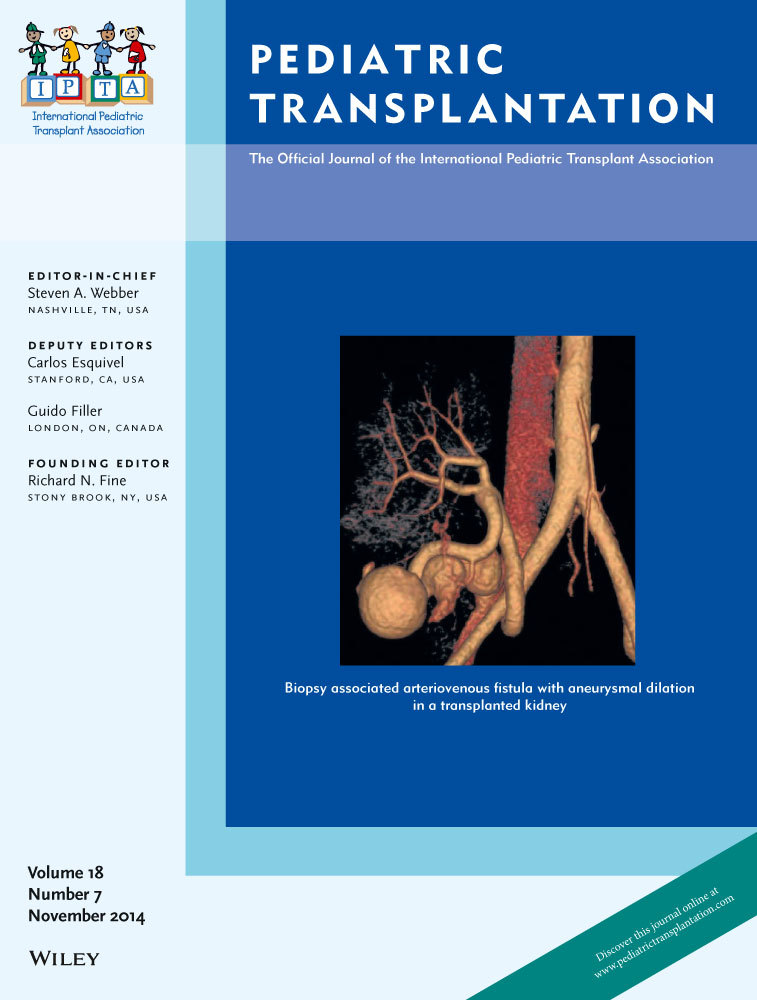Myocyte growth, repair, and oxidative stress following pediatric heart transplantation
Abstract
Cardiac remodeling is associated with plasma biomarkers of fibrinogenesis, inflammation, and oxidative stress, and upregulation of mitogenic, pro-fibrotic, and apoptotic signaling pathways. Our primary objective was to evaluate biomarker and subcellular myocardial changes in pediatric heart transplant recipients. Fifty-two-week prospective, randomized (tacrolimus, Tac, vs. cyclosporine, CsA), open-label, parallel group study. Serial myocardial biopsies were probed for mitogenic and pro-inflammatory proteins. Plasma biomarkers of oxidative stress (F2α isoprostanes, nitrotyrosine), and inflammation and oxidation (hsCRP and cystatin-C) were measured. Nine of 11 randomized patients completed the study (four Tac, five CsA). Mean levels of F2α isoprostanes, hsCRP, and cystatin-C were maximal at Week 2. Peak activation of all MAP kinases in myocardial tissue was maximal at Week 10; no association was seen with rejection. Cardiac Bax/Bcl-2 levels (index of apoptosis) correlated negatively with F2α isoprostanes at Week 2 (r = −0.88) and with hsCRP at Week 52 (r = −0.67). At Week 52, hsCRP levels correlated positively with molecular indices of cardiac cell growth. We found evidence of systemic and myocardial oxidative damage and inflammation early posttransplant, which may be related to the remodeling process. Further study is needed to better understand the cardiac and systemic repair processes following pediatric heart transplantation.




